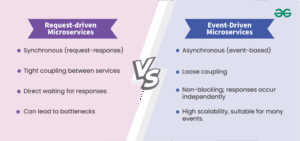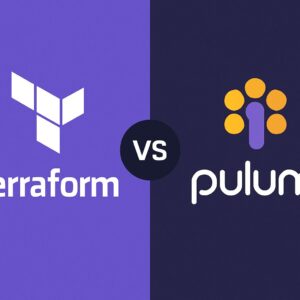In today’s rapidly evolving business landscape, it is crucial for organizations to optimize their cloud architecture to not only meet their operational needs but also to mitigate costs. With the ever-growing popularity of Amazon Web Services (AWS), organizations can tap into the potential of cost-effective cloud architecture to drive efficiency and scalability. In this article, we will explore the key strategies and best practices for achieving cost-effective cloud architecture with AWS. From leveraging AWS tools and services to optimizing resource allocation, we will provide valuable insights into maximizing the benefits of AWS’s cloud offerings. At SlickFinch, we are experts in AWS cloud architecture and can assist you in designing and implementing a cost-effective solution tailored to your specific needs. Contact us today to explore the possibilities of cost-effective cloud architecture with AWS.

Understanding AWS Cloud Architecture
Introduction to AWS Cloud Architecture
AWS Cloud Architecture refers to the design and structure of the infrastructure and services provided by Amazon Web Services (AWS). It encompasses the layout and configuration of resources such as servers, databases, storage, and networks, which are hosted on the AWS cloud. Cloud architecture plays a fundamental role in enabling businesses to leverage the flexibility, scalability, and cost-efficiency of cloud computing.
Benefits of AWS Cloud Architecture
AWS Cloud Architecture offers a multitude of benefits for businesses of all sizes and industries. Firstly, it provides the flexibility to scale resources up or down based on demand, allowing organizations to quickly adapt to changing needs. This flexibility also enables cost optimization as businesses only pay for the resources they consume. Moreover, AWS offers a wide range of services and tools that enable businesses to enhance their operational efficiency, improve security, and achieve high availability and reliability. Additionally, AWS Cloud Architecture eliminates the need for managing physical infrastructure, reducing maintenance and administrative overhead.
Factors to consider in AWS Cloud Architecture
When designing AWS Cloud Architecture, several factors need to be considered to ensure optimal performance and cost efficiency. The workload requirements, such as compute power, storage capacity, and network bandwidth, must be carefully assessed. Additionally, factors such as security, scalability, availability, and compliance should be taken into account to align the architecture with the specific needs of the organization. Furthermore, consideration should also be given to the integration with existing systems, data transfer requirements, and disaster recovery plans.
Cost Considerations in AWS Cloud Architecture
Cost Optimization Strategies
Cost optimization is a crucial aspect of AWS Cloud Architecture. By implementing certain strategies, businesses can leverage the cost-saving benefits that AWS provides. One strategy is to analyze and identify idle or underutilized resources and either terminate or optimize them. Another is to leverage automation and auto-scaling capabilities to align resource allocation with actual demand, thereby avoiding unnecessary costs. Additionally, businesses should take advantage of AWS’s cost management tools, such as AWS Budgets and AWS Cost Explorer, to monitor and control costs effectively.
Pricing Models in AWS
AWS offers various pricing models to accommodate different use cases and budgets. The On-Demand model allows businesses to pay for compute capacity by the hour or second with no long-term commitments. Reserved Instances provide a discount for making a commitment to use a specific amount of compute capacity for a predetermined period. Spot Instances allow businesses to bid on unused AWS capacity, offering significant savings compared to On-Demand instances. Lastly, AWS also offers Savings Plans and Dedicated Hosts, providing additional cost-saving options depending on the workload requirements.
Understanding AWS Free Tier
For businesses that are starting out with AWS, the AWS Free Tier provides a valuable opportunity to explore and experiment with AWS services at no cost for a limited period. The Free Tier offers a range of services with certain usage limits, allowing businesses to get hands-on experience with AWS without incurring any charges. It is important to understand the specific terms and limitations of the AWS Free Tier to avoid unexpected costs. SlickFinch has extensive experience in optimizing resource usage within the AWS Free Tier, ensuring businesses maximize their benefits while staying within the cost-free limits.
Monitoring and Cost Management Tools
AWS provides a selection of monitoring and cost management tools that help businesses monitor their resource usage, identify opportunities for cost optimization, and track their AWS spending. Amazon CloudWatch enables businesses to collect and monitor metrics, logs, and events from AWS resources. AWS Trusted Advisor provides real-time guidance to help optimize resource utilization, improve security, and reduce costs. Moreover, AWS Cost Explorer allows businesses to visualize and analyze their AWS spending patterns, enabling them to make informed decisions for cost optimization. SlickFinch can assist businesses in effectively utilizing these tools to achieve cost-effective cloud architecture.
Designing for Cost Optimization
Right Sizing Instances
One of the key strategies for cost optimization in AWS Cloud Architecture is right-sizing instances. This involves selecting the appropriate type and size of EC2 instances based on the workload requirements. By closely matching the compute, memory, and storage needs of the application with the right instance type, businesses can avoid overprovisioning and reduce costs. Additionally, utilizing AWS’s instance type families, such as burstable instances or compute-optimized instances, can further optimize cost by aligning the instances with the specific workload characteristics.
Autoscaling
Autoscaling is a powerful feature in AWS that allows businesses to automatically adjust the number of instances based on workload demand. By setting up autoscaling policies, businesses can dynamically increase or decrease the number of instances in response to changes in traffic or workload. This ensures that the resources are scaled to meet demand efficiently, minimizing costs associated with overprovisioning or underutilization. SlickFinch has the expertise to help businesses implement and optimize autoscaling in their AWS Cloud Architecture, ensuring cost efficiency and optimal performance.
Database Optimization
Database optimization is another area where cost optimization can be achieved in AWS. By choosing the right database engine, such as Amazon RDS or Amazon DynamoDB, businesses can benefit from managed services that offer cost savings through automated backups, maintenance, and scalability. Additionally, optimizing database queries, implementing caching mechanisms, and leveraging the AWS database services effectively can further reduce costs by minimizing resource utilization and improving performance.
Storage Optimization
Effective storage optimization is crucial for achieving cost efficiency in AWS Cloud Architecture. AWS offers various storage services, such as Amazon S3, Amazon EBS, and Amazon Glacier, each with different performance and cost characteristics. By carefully selecting the appropriate storage class based on the access patterns and durability requirements of the data, businesses can optimize storage costs. Moreover, implementing data lifecycle policies, leveraging compression and deduplication techniques, and utilizing tiered storage solutions can further optimize storage costs. SlickFinch specializes in storage optimization strategies that can help businesses reduce costs while ensuring data remains accessible and secure.

Architectural Best Practices
Modular and Microservices Architecture
Modular and microservices architecture is a best practice in AWS Cloud Architecture that promotes agility, scalability, and cost optimization. By breaking down the application into smaller, loosely coupled modules or microservices, businesses can scale individual components independently, reducing resource waste. Additionally, it enables seamless integration and deployment of new features or updates without impacting the entire application. SlickFinch has extensive experience in designing modular and microservices architectures, enabling businesses to achieve cost-effective and resilient systems.
Serverless Architecture
Serverless architecture, built upon AWS Lambda, is a paradigm shift in cloud computing that eliminates the need for provisioning and managing servers. With serverless architecture, businesses pay only for the actual compute time consumed by their applications, avoiding costs associated with idle resources. Additionally, serverless applications benefit from automatic scaling and high availability, leading to improved performance and reliability. SlickFinch can guide businesses in adopting serverless architecture and leverage AWS Lambda, allowing them to achieve substantial cost savings without compromising functionality or performance.
Containerization
Containerization, using services like Amazon Elastic Container Service (ECS) or Amazon Elastic Kubernetes Service (EKS), allows businesses to package applications and all their dependencies into lightweight containers. Containers provide a consistent, portable, and scalable environment for running applications, enabling businesses to optimize resource utilization and reduce costs. By leveraging container orchestration and automation, businesses can efficiently manage and scale containerized applications while achieving cost savings. SlickFinch can help businesses implement containerization strategies in their AWS Cloud Architecture, ensuring optimal performance and cost efficiency.
Using Managed Services and Serverless Applications
Benefits of Managed Services
AWS offers a wide range of managed services that alleviate the operational burden for businesses. Managed services, such as Amazon RDS, Amazon DynamoDB, and Amazon S3, handle routine tasks such as backups, patching, and scaling automatically. By utilizing these managed services, businesses can focus on their core competencies while benefiting from performance optimization, high availability, and reduced administrative overhead. SlickFinch can assist businesses in identifying and implementing the appropriate managed services within their AWS Cloud Architecture to achieve cost efficiency and operational excellence.
Choosing the Right Managed Services
Selecting the right managed services is critical for optimizing costs in AWS Cloud Architecture. Businesses should carefully assess their requirements and match them with the capabilities of the managed services available. Factors such as scalability, performance, data durability, and pricing models should be considered when making these choices. SlickFinch has deep expertise in the AWS ecosystem and can help businesses evaluate their options, select the most suitable managed services, and seamlessly integrate them into their AWS Cloud Architecture.
Developing Serverless Applications
Developing serverless applications in AWS is an effective way to achieve cost optimization and operational efficiency. By leveraging services such as AWS Lambda, Amazon API Gateway, and Amazon DynamoDB, businesses can build applications without the need to manage servers or provision infrastructure. Serverless applications automatically scale based on demand, ensuring efficient resource utilization and cost savings. Additionally, serverless applications benefit from reduced development time, faster deployment, and improved time-to-market. SlickFinch specializes in developing serverless applications and can guide businesses in building serverless architectures that are cost-effective and scalable.
Leveraging Spot Instances
Understanding Spot Instances
Spot Instances in AWS offer a significant opportunity for cost savings by allowing businesses to bid on unused EC2 capacity. Spot Instances can provide access to spare Amazon EC2 instances at a significantly reduced cost compared to On-Demand instances. However, it’s important to note that Spot Instances can be interrupted by AWS if the Spot price exceeds the bid price, so they may not be suitable for all types of workloads. Proper architectural design and workload management are crucial when incorporating Spot Instances into AWS Cloud Architecture.
Use Cases for Spot Instances
Spot Instances are well-suited for workloads that are flexible in terms of start and end times or can withstand interruptions. This includes batch processing, data analysis, image rendering, and simulations. By leveraging Spot Instances for these types of workloads, businesses can significantly reduce their compute costs without impacting the overall performance of the application. SlickFinch has experience in identifying and optimizing the use of Spot Instances to achieve maximum cost savings for businesses while ensuring workload efficiency.
Combining Spot Instances with On-Demand and Reserved Instances
To maximize cost optimization in AWS, businesses can combine Spot Instances with On-Demand and Reserved Instances strategically. By using Spot Instances for non-critical or non-time-sensitive workloads, Reserved Instances for predictable workloads, and On-Demand Instances for unpredictable or urgent workloads, businesses can achieve a balance between cost efficiency and performance. This flexible usage of instance types allows businesses to optimize costs while ensuring the required level of availability and capacity. SlickFinch can help businesses analyze their workload patterns and develop a cost-effective instance usage strategy for their AWS Cloud Architecture.
Leveraging Reserved Instances
Understanding Reserved Instances
Reserved Instances (RIs) are a pricing option that allows businesses to make a commitment to use a specific amount of compute capacity in AWS for a specified term. By reserving instances in advance, businesses can benefit from significant cost savings compared to On-Demand instances. RIs provide greater cost predictability and are best suited for workloads with consistent or predictable usage patterns.
Types of Reserved Instances
AWS offers various types of Reserved Instances to cater to different workload requirements. Standard Reserved Instances offer the most significant discounts and are ideal for steady-state workloads. Convertible Reserved Instances offer flexibility by allowing businesses to exchange one instance for another with different attributes. Scheduled Reserved Instances are designed for workloads that require capacity reservation on a recurring basis, such as a weekly or monthly schedule. SlickFinch can assist businesses in selecting and optimizing the usage of the most suitable Reserved Instances to achieve maximum cost savings.
Best Practices for Utilizing Reserved Instances
To effectively utilize Reserved Instances, several best practices need to be implemented. It is essential to analyze historical usage patterns and identify workloads that have consistent or predictable usage. Careful consideration should be given to the term length and payment options to align with the workload duration and budget requirements. Additionally, businesses should continuously monitor and optimize their RI inventory to ensure they are effectively utilized. SlickFinch has the expertise to guide businesses through the Reserved Instances optimization process, maximizing cost savings in AWS Cloud Architecture.
Optimizing Data Transfer Costs
Choosing the Right AWS Region
AWS operates in multiple regions worldwide, and each region has different pricing for data transfer. By selecting the right AWS region for deployment, businesses can optimize data transfer costs. Proximity to end-users, availability of services, and regulatory compliance may influence the choice of region. Moreover, utilizing AWS’s Global Accelerator or Amazon CloudFront content delivery network (CDN) can further enhance performance and reduce data transfer costs by caching content closer to end-users. SlickFinch can assist businesses in evaluating their specific requirements and choosing the optimal AWS region to achieve cost-effective data transfer.
Peering Connections
AWS allows businesses to establish direct peering connections between their own networks and AWS, bypassing the public internet for data transfer. Peering connections enable faster and more cost-effective data transfer between on-premises infrastructure and AWS resources. They are particularly beneficial for transferring large volumes of data or sensitive information securely. SlickFinch can help businesses set up and configure peering connections, ensuring efficient and cost-effective data transfer in AWS Cloud Architecture.
Content Delivery Networks
Content Delivery Networks (CDNs) play a crucial role in data transfer optimization. AWS offers Amazon CloudFront, a fast and highly secure CDN that can deliver content to end-users with low latency and high reliability. By caching static and dynamic content at edge locations worldwide, CloudFront reduces data transfer costs by minimizing the distance data travels. Additionally, CloudFront provides advanced features such as content compression, intelligent caching, and real-time metrics, further optimizing performance and cost efficiency. SlickFinch can assist businesses in implementing and optimizing CloudFront within their AWS Cloud Architecture, ensuring optimal content delivery and cost savings.
Implementing Cost Controls
Resource Tagging and Cost Allocation
Resource tagging and cost allocation play a crucial role in managing and controlling costs in AWS. By utilizing resource tags, businesses can label and categorize resources based on various attributes, such as department, project, or environment. This enables better cost visibility and allocation, allowing businesses to monitor and optimize spending across different dimensions. AWS provides comprehensive tools, such as AWS Cost Explorer and AWS Cost and Usage Reports, that can generate detailed cost reports based on resource tags. SlickFinch specializes in implementing robust cost allocation strategies, helping businesses gain granular cost visibility and control in AWS Cloud Architecture.
Budgets and Alerts
AWS Budgets allow businesses to set spending thresholds and receive alerts when costs exceed predefined limits. By defining budgets for various cost categories, businesses can proactively monitor their AWS spending and take corrective actions if necessary. Budgets can be configured to send email notifications, trigger AWS Lambda functions, or push messages to Amazon SNS topics to enable real-time alerts. This proactive cost monitoring enables businesses to course-correct and avoid unexpected cost overruns. SlickFinch can assist businesses in setting up and managing AWS Budgets effectively, ensuring cost control and optimization.
Using AWS Cost Explorer
AWS Cost Explorer is a web-based tool that provides comprehensive cost analysis and reports for AWS usage. It enables businesses to visualize, analyze, and forecast their AWS spending, allowing them to make informed decisions for cost optimization. AWS Cost Explorer provides historical and forecasted spending data, cost breakdown by services and usage types, and the ability to filter and group data based on various dimensions. SlickFinch can guide businesses in utilizing AWS Cost Explorer to gain actionable insights into their AWS spending and implement effective cost optimization strategies.
Conclusion
SlickFinch is your trusted partner in achieving cost-effective cloud architecture with AWS. We have extensive knowledge and experience in designing, optimizing, and managing AWS Cloud Architecture to ensure businesses achieve maximum cost savings while maintaining performance and reliability. Whether it’s designing modular and microservices architecture, implementing serverless applications, or leveraging cost optimization strategies, SlickFinch has the expertise to guide businesses on their AWS cloud journey. Contact SlickFinch today to unlock the full potential of AWS and achieve cost-effective cloud infrastructure.




